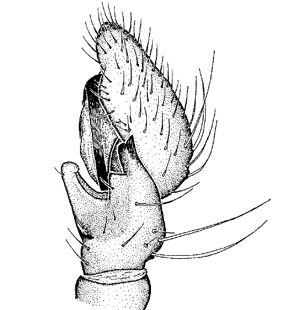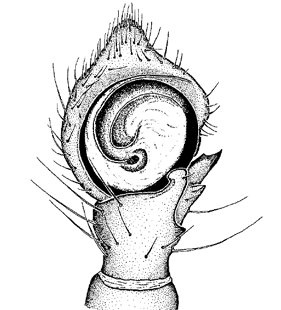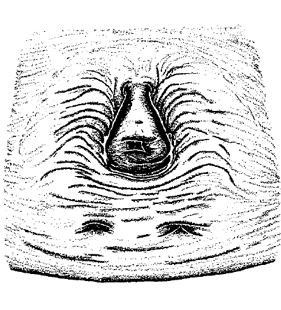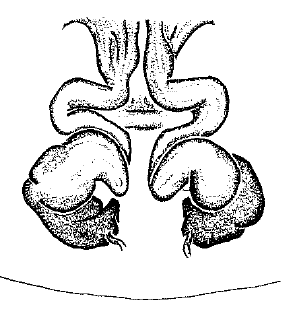Heriaeus orientalis Simon, 1918
Description
Male
Habitus resembles H. pilosus, but larger. Opisthosoma oval, slightly longer than wide. Palp: Very short, thorn-like process at base of ventral apophysis. Leading ditch distinctly separated from tegulum. Embolus thin, lacking apical sclerite.
Prosoma length: 2.0-2.1 mm, prosoma width: 1.8-2.0 mm.
Body length male: 4-5 mmFemale
Opisthosoma almost oval, not dilatating. Epigyne: hood small, inconspicuous, strongly sclerotized. Ducts not folded but convoluted.
Prosoma length: 3.0-3.1 mm, prosoma width: 2.9-3.0 mm.
Body length female: 6-8 mmDistribution
Figures
Distribution List
"No references" does not mean that the species does not occur in this country, but that we have not yet inserted the reference for it. We are working on it.
References
Bosmans R, Gavalas I (2023) The spiders (Araneae) of the tiny Greek island Iraklia (Kiklades), with the descriptions of 5 new Harpactea species (Araneae: Dysderidae), 3 species new to Europe and 8 new to Greece. Parnassiana Archives 11 (Suppl. 1): 1-91 ![]()
Danışman T, Kunt K B, Özkütük R S, Coşar İ (2024a) The checklist of the spiders of Turkey. Version 2024 [last updated 01 January 2024], online at http://www.spidersofturkey.info ![]()
Loerbroks A (1983) Revision der Krabbenspinnen-Gattung Heriaeus Simon (Arachnida, Araneae, Thomisidae). Verhandlungen des Naturwissenschaftlichen Vereins in Hamburg (NF) 26: 85-139 ![]()
Pantini P, Isaia M (2019) Araneae.it: the online catalog of Italian spiders, with addenda on other arachnid orders occurring in Italy (Arachnida: Araneae, Opiliones, Palpigradi, Pseudoscorpionida, Scorpiones, Solifugae). Fragmenta Entomologica 51: 127-152 ![]()
WSC (2025) World Spider Catalog. Version 26. Natural History Museum Bern, online at http://wsc.nmbe.ch (28.2.2025) doi: 10.24436/2 ![]()
Updates
| 06-02-2024 | Image insert | |
| 14-04-2018 | Image insert | |
| 08-07-2014 | Image insert |





